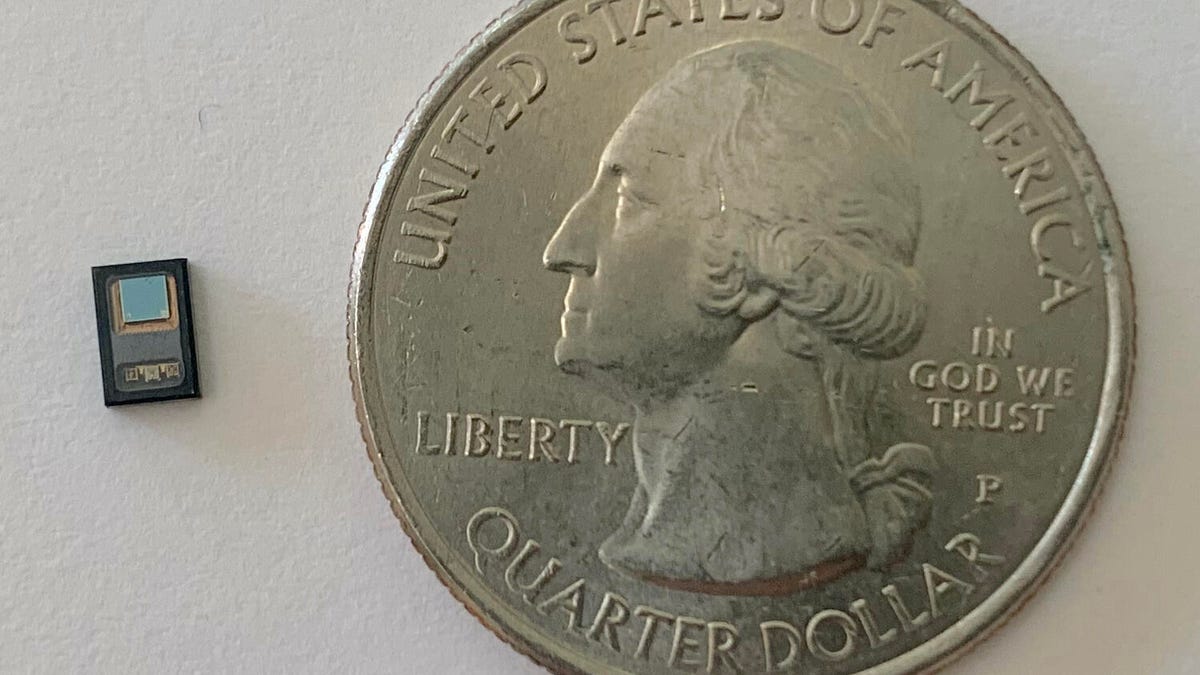Sensor maker Valencell expects more blood pressure-sensing wearables in 2022
Maybe not on the wrist, but ear and finger... maybe a pulse oximeter device?

Valencell's PPG optical heart rate sensor: It's small, could eventually check for blood pressure and could fit in earbuds (or a watch bezel).
It's 2021... where's my blood pressure smartwatch? Despite wearable health tech introducing features like blood oxygen measurement, ECG and even generalized changes in body temperature, blood pressure has proved a harder challenge. But sensor maker Valencell believes the possibilities are there, with research claiming finger-sensor blood pressure without calibration on wearables could be here by 2022.
Samsung promised blood pressure capabilities on its recent smartwatches, but the feature needs calibration with a standard blood pressure cuff, and even then it still hasn't gotten clearance from the US Food and Drug Administration. Omron, a manufacturer of medical devices, has a blood pressure-monitoring watch, but it uses an inflatable wrist-cuff and is expensive.
Valencell develops the optical heart rate sensors that a number of other devices use, and has been working on evolving its photoplethysmography sensors, which use light and a sensor to measure blood activity, to also measure blood pressure. Last year, before the COVID-19 pandemic, the company believed that earbud heart-rate monitors could double as blood pressure-sensing devices in 2021. Plans changed, though.
See also
Valencell President Steven LeBoeuf says that the capability in earbuds is still there, but that consumer earbud manufacturers aren't that interested (the medical hearing aid market, apparently, could be a better landing place for the tech). Instead, interest has been more towards finger and wrist health devices.
One earbud with Valencell's heart rate tech, made by Huami (the company behind the Amazfit brand), doesn't have the blood pressure feature. One likely reason is that manufacturers would still need to pursue FDA and other country-based health clearance, which takes a lot of time. Valencell is currently pursuing a 510(k) submission to the FDA for its finger-sensing blood pressure technology.
Valencell's making progress on wrist-based blood pressure, but its error rate is still plus or minus 13mm of mercury: "That's still not good enough," LeBoeuf says. Meanwhile, its finger-based measurements are at error levels closer to its earbud tech, which more closely approach the accuracy of blood pressure cuffs.
LeBoeuf still sees the medical device landscape as an easier path than mainstream wearables, referencing the success of standalone devices like AliveCor's ECG accessories.
"We think that on the blood pressure technology for wearables, it's much more likely to be adopted in use cases where the payment methodology ... is very well defined," LeBoeuf says, referring to devices that can be reimbursed by insurance, or where doctors can get paid. "This person needs to monitor their blood pressure for whatever reason, or is told to by their doctor. Now they could use a blood pressure cuff for this, but it's likely they won't even use a blood pressure cuff, if that's the case. So what can you do as an alternative to the blood pressure cuff?"
According to Valencell, its calibration-free blood pressure sensing still has margins of error too large to work on-wrist yet, but progress has been made since last year. The company's latest studies show it's feasible to use a finger to check for blood pressure with its tech, good enough to pursue eventual FDA clearance. Other companies are doing finger-based blood pressure sensing, even using phone cameras, but those systems still need calibration to work, and don't yet have FDA clearance either. Valencell's tech aims to work on its own, with no calibration setup needed. That's how it worked for me when I tested the company's in-ear blood pressure monitor last year at CES.
Valencell doesn't see this tech as replacing blood-pressure cuffs, though -- not yet. Instead, it could be a more frequent monitoring method between check-ins with a cuff, almost like the way the Apple Watch monitors possible atrial fibrillation, then recommends doing an ECG spot check.
A finger-scanning device wouldn't be such a bad idea. Valencell says it could incorporate the tech into finger-worn pulse oximetry readers that test for blood oxygen levels, which have become a popular home purchase during the pandemic. Those devices use similar optical tech, and could add on Valencell's new algorithms. The finger's less invasive-feeling than an earbud, and less personal than a watch, which could make it a more easily-shared family device. The company's recent survey found that a finger or pulse oximeter was the most-preferred measurement spot for potential users (41%), followed by watch, then phone, then fitness band, with earbuds in last place (10%).
Valencell doesn't expect its tech to emerge in products in the US in 2021, but 2022 seems likely. In the meantime, your best bet if you have high blood pressure (like I do) is probably to take standard cuff measurements, and be patient. Or, look into cuffs that communicate directly with your doctor.

